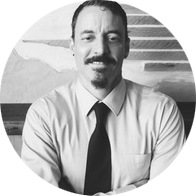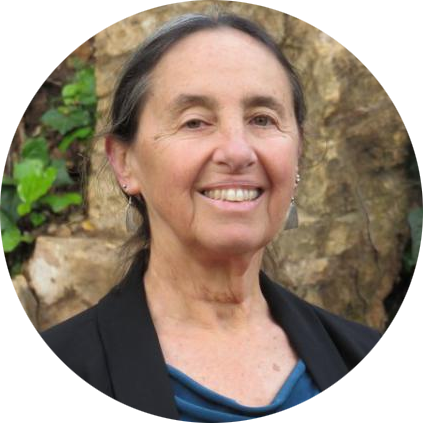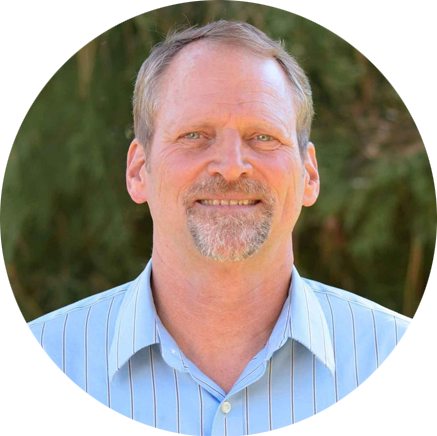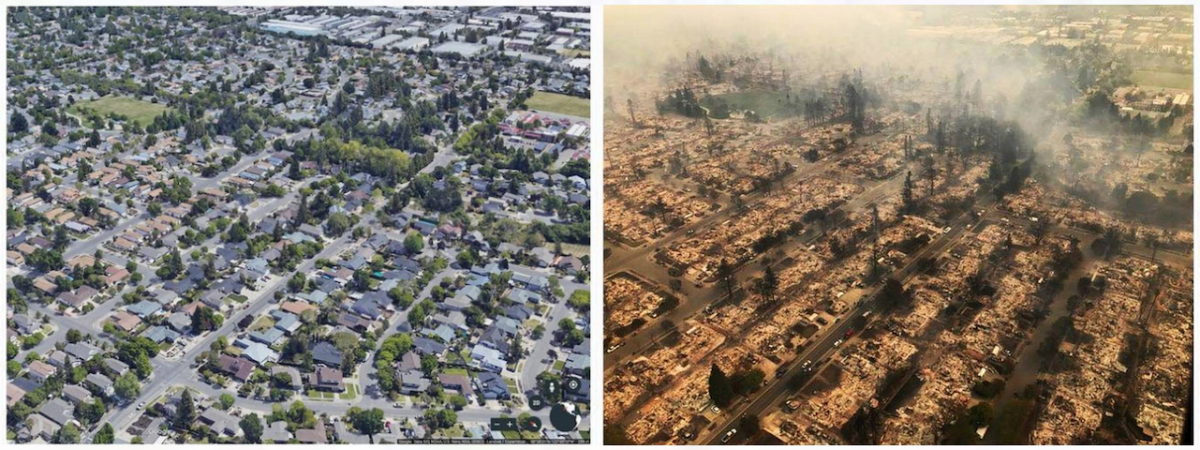Media Briefing: Climate Change and Wildfires, 10-18-2017
Introduction
On October 8, a group of fires exploded across a wide swath of Northern California. The fires were among the worst on record in the state in terms of lives and property lost. They killed at least 42 people, burnt more than 200,000 acres, destroyed or damaged more than 5,500 homes, and displaced 100,000 people.
Fighting wildfire is now costing the U.S. billions of dollars each year as climate change continues to fuel the flames. Parched foliage and excess heat, signs of climate change, help increase the frequency, intensity and length of wildfires and wildfire season. Half of the recent increase in the acreage of wildfire across the U.S. west has been attributed climate change. In California, climate change has amplified the state's historic extreme heat, years of ongoing drought, and tree die-off are increasing wildfire risk.
Climate Signals hosted a briefing for journalists and policymakers with a panel of wildfire experts. In the discussion highlights below, experts shed light on how climate change is contributing to conditions that intensify wildfires, how to reduce risk, and how to manage increasingly severe fires.
Click the following links for climate change excerpts from the call and to access the full transcript. For science reports and more on the trends discussed in this briefing click here.
Before and after images of the Coffey Park neighborhood in Santa Rosa. The image on the right is from Monday, Oct. 9, 2017. The left undated image provided by Google Earth shows the area before the fire. Photo: AP
Speakers
- Dr. LeRoy Westerling – Professor of Management of Complex Systems and Co-Director of the Center for Climate Communication at UC-Merced
- Dr. Linda Rudolph, MD, MPH – Director of the Center for Climate Change and Health at the Public Health Institute in Oakland, CA
- Dr. Bill Stewart – Cooperative Extension Forestry Specialist at UC Berkeley in the Department of Environmental, Science and Policy Management and Co-Director of UC Center for Forestry & Center for Fire Research and Outreach
Selected quotes
 LeRoy Westerling
LeRoy Westerling
Professor of Management of Complex Systems and Co-Director of the Center for Climate Communication at UC-Merced
Climate change has introduced unprecedented rates of change for anything that we've been able to measure or recreate from from the Holocene. So we're looking at two problems: one is that it’s things like wildfire and drought and beetles that really drive the change that we perceive. Even though climate change is progressing basically all the time, the landscape gets reorganized in steps, or sudden shifts, as we have these big intense disturbances.
...for decades now we've had average temperatures in the long run that have been warmer than the historic temperatures that we use as our baseline for comparison. And warmer temperatures means more evaporation, more evaporation from the soils, more evaporation from the fuel. And cumulatively over time, it can have a profound effect on the landscape, and on the flammability of fuel, and on the availability of fuel.
Climate change also means enhanced variability in the precipitation, so more extreme wet and dry events. The combination of that high background variability that's getting exacerbated by climate change and the warmer temperatures that increase evaporation means that your droughts get enhanced and become more severe and we’re also seeing more drying out over time.
The Coffey Park neighborhood in Santa Rosa, Calif., was destroyed by an intense wildfire.Photo: Wilson/The New York Times
You have two dials: one controls how much precipitation is going in and that’s getting more variable and maybe slightly increasing over time on average, and the other is the temperature and that's mostly going in one direction, it’s getting warmer, and that’s increasing the evaporation coming out. And the thing is you would need way more of an increase in precipitation than anything that's being projected or that's being observed for our region to counteract the cumulative drying of year after year warmer temperatures. So, overall, that means our landscape is drying out.
...like this year we had very warm temperatures in the spring and summer, that means more evaporation..., that means less moisture to carry over. It also means that the fuel after a very wet winter, they can dry out especially in these coastal counties like Napa and Sonoma by the time you get to to the fall fire season.
Warmer temperatures means more evaporation from the soils, more evaporation from the fuel and over time, it can have a profound effect on the landscape, and on the flammability of fuel, and on the availability of fuel. The fuel after a very wet winter can dry out especially in these coastal counties like Napa and Sonoma by the time you get to to the fall fire season.
Your droughts are more significant, because you have less moisture carrying over from the wet years and you have warmer temperatures during the drought. So all of that together really sort of turns up the dial a notch on the extremes that we can experience in terms of drought and in terms a wildfire.
For the foreseeable future, forest fires are going to continue to increase until fuel becomes more of a limitation. Chaparral can regenerate fuels pretty quickly. So this is really part of what we have to learn to adapt to live with as it intensifies with climate change.
 Linda Rudolph
Linda Rudolph
Director of the Center for Climate Change and Health at the Public Health Institute in Oakland, CA
This has been a really tragic wildfire. And along with all the recent hurricanes it's another demonstration of the fact that climate change is already threatening our health and safety. We certainly need to prepare for the impacts of climate change but it's also critical that we act to reduce emissions of climate pollutants so that we prevent even more devastating climate change impacts on our health and the wellbeing of our communities and our children.
The San Francisco skyline is obscured by smoke and haze from wildfires Thursday, Oct. 12, 2017, in this view from Sausalito, Calif. Photo: AP
Wildfire smoke exposure has been associated in numerous studies with increased premature deaths, hospitalizations for asthma and chest pain . . . The plumes of wildfire smoke can travel very long distances so thousands of people even quite distant from a wildfire may be affected by the smoke. The risks of mental health problems, especially depression and post-traumatic stress disorder after a wildfire, are also high and often not discussed as much as the respiratory effects . . . And for people that are in burned areas . . . ash and debris can contain a lot of toxic substances such as asbestos and heavy metals.
Higher temperatures are associated with more emergency room visits for heart disease stroke, diabetes and renal failure. So we should be very concerned about what increasing temperatures and greater extreme heat events are doing in terms of the public health impacts.
 Bill Stewart
Bill Stewart
Cooperative Extension Forestry Specialist at UC Berkeley in the Department of Environmental, Science and Policy Management and Co-Director of UC Center for Forestry & Center for Fire Research and Outreach
We’re seeing Northern California, as it dries out, is acting more like Southern California where these fires we’re having this would not be that unusual for Los Angeles or San Diego County. It’s becoming more and more common here that we're having fire weather and I think that's really what example climate change is making… It seems like we're living in a county that’s one or two counties south every decade in terms of fire behavior.
The biggest change has been having wildfires later and later into the fall… We have a lot in the Sierra Nevada but I don't remember the really big ones in Southern California compared to some the previous years. But the long term trend has been more and more acres burning in Southern California decade upon decade.
We looked at grasslands, shrub lands, and forests, and it varies by ownership, but you know the range in every one of those types was somewhere between 25 and 50% more fires, whether it's private shrub plans, federal forests, private forests, all of them all of them have increased. And that was just looking at the acres burned from the historical fire perimeter record we have that goes back to the 1950s.





